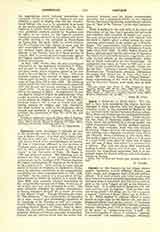

Capsa, a titular see of North Africa. The city, said to have been founded by the Libyan Hercules, belonged to King Jugurtha, who had deposited his treasures there; it was captured by Marius in 106 B.C. and destroyed, but later became a Roman colony. When Africa was divided into two provinces by Justinian, it was assigned to Byzacena. Under Justinian the Duke of Byzacena resided there and the town, which was protected by a strong citadel, was called Justiniana Capsa. In the eleventh century, after the Arab conquest, more than two hundred flourishing villages stood in the surrounding region. Five bishops, one a Donatist, are known from 255 to 484 (Morcelli, Africa Christiana, I, 118; Gams, 464). The modern name of the town is Gafsa; it is situated in a most fertile oasis, about 81 miles west of Gabes and 128 west of Sfax, with which it is connected by a railway. The oasis has about 5000 inhabitants, trading in dates, carpets, and wool rugs. It is well watered, has magnificent palm trees, and is an important center for French military and civil administration in Tunisia.
S. VAILHE

